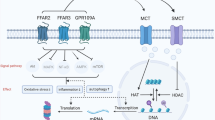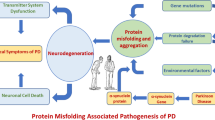Abstract
Parkinson’s disease (PD) is a neurological disorder pathologically characterized by loss of dopaminergic neurons in the substantia nigra. No curative therapy is available for PD. We recently found that phytoestrogen β-ecdysterone (β-Ecd) is able to reduce MPP+-induced apoptosis in PC12 cells. This study investigated the potential of β-Ecd to protect against SH-SY5Y cell apoptosis induced by the PD-related neurotoxin 6-hydroxydopamine (6-OHDA) and the underlying mechanism for this cytoprotection. In the present study, pretreatment with β-Ecd significantly reduced 6-OHDA-induced apoptosis of SH-SY5Y cells by a mitochondria-dependent pathway, as indicated by downregulation of Bax and PUMA (p53 upregulated modulator of apoptosis) expression, suppressing ΔΨm loss, inhibiting cytochrome c release, and attenuating caspase-9 activation. Furthermore, we showed that the inhibition of p38 mitogen-activated protein kinase (p38MAPK)-dependent p53 promoter activity contributed to the protection of SH-SY5Y cells from apoptosis, which was validated by the use of SB203580 or p38β dominant negative (DN) mutants. Additionally, knock-down apoptosis signal-regulating kinase 1 (ASK1) by specific shRNA and blockade reactive oxygen species (ROS) by pharmacological inhibitor competently prevented β-Ecd-mediated inhibition of p38MAPK and ASK1 phosphorylation, respectively. These data provide the first evidence that β-Ecd protects SH-SY5Y cells against 6-OHDA-induced apoptosis, possibly through mitochondria protection and p53 modulation via ROS-dependent ASK1–p38MAPK pathways. The neuroprotective effects of β-Ecd make it a promising candidate as a therapeutic agent for PD.







Similar content being viewed by others
References
Adnan M, Morton G, Hadi S (2011) Analysis of rpoS and bolA gene expression under various stress-induced environments in planktonic and biofilm phase using 2(−ΔΔCT) method. Mol Cell Biochem 357:275–282
Alves da Costa C, Checler F (2011) Apoptosis in Parkinson’s disease: is p53 the missing link between genetic and sporadic Parkinsonism? Cell Signal 23:963–968
Ataie A, Ataee R, Mansoury Z, Aghajanpour M (2013) Homocysteine intracerebroventricular injection induces apoptosis in the substantia nigra cells and Parkinson’s disease like behavior in rats. Int J Mol Cell Med 2:80–85
Batelli S, Invernizzi RW, Negro A, Calcagno E, Rodilossi S, Forloni G, Albani D (2015) The Parkinson’s disease-related protein DJ-1 protects dopaminergic neurons in vivo and cultured cells from alpha-synuclein and 6-hydroxydopamine toxicity. Neurodegener Dis 15:13–23
Bozi M, Papadimitriou D, Antonellou R, Moraitou M, Maniati M, Vassilatis DK, Papageorgiou SG, Leonardos A, Tagaris G, Malamis G, Theofilopoulos D, Kamakari S, Stamboulis E, Hadjigeorgiou GM, Athanassiadou A, Michelakakis H, Papadimitriou A, Gasser T, Stefanis L (2014) Genetic assessment of familial and early-onset Parkinson’s disease in a Greek population. Eur J Neurol 21:963–968
Cao J, Ying M, Xie N, Lin G, Dong R, Zhang J, Yan H, Yang X, He Q, Yang B (2014) The oxidation states of DJ-1 dictate the cell fate in response to oxidative stress triggered by 4-hpr: autophagy or apoptosis? Antioxid Redox Signal 21:1443–1459
Chambers JW, Howard S, LoGrasso PV (2013) Blocking c-Jun N-terminal kinase (JNK) translocation to the mitochondria prevents 6-hydroxydopamine-induced toxicity in vitro and in vivo. J Biol Chem 288:1079–1087
Chung YC, Kim YS, Bok E, Yune TY, Maeng S, Jin BK (2013) MMP-3 contributes to nigrostriatal dopaminergic neuronal loss, BBB damage, and neuroinflammation in an MPTP mouse model of Parkinson’s disease. Mediators Inflamm 2013:370526
Cristóvão AC, Guhathakurta S, Bok E, Je G, Yoo SD, Choi DH, Kim YS (2012) NADPH oxidase 1 mediates α-synucleinopathy in Parkinson’s disease. J Neurosci 32:14465–14477
Davidovich P, Kearney CJ, Martin SJ (2014) Inflammatory outcomes of apoptosis, necrosis and necroptosis. Biol Chem 395:1163–1171
Dijkstra AA, Voorn P, Berendse HW, Groenewegen HJ, Bank Netherlands Brain, Rozemuller AJ, van de Berg WD (2014) Stage-dependent nigral neuronal loss in incidental Lewy body and Parkinson’s disease. Mov Disord 29:1244–1251
Dong H, Li R, Yu C, Xu T, Zhang X, Dong M (2015) Paeoniflorin inhibition of 6-hydroxydopamine-induced apoptosis in PC12 cells via suppressing reactive oxygen species-mediated PKCδ/NF-κB pathway. Neuroscience 285:70–80
Filomeni G, Piccirillo S, Rotilio G, Ciriolo MR (2012) p38(MAPK) and ERK1/2 dictate cell death/survival response to different pro-oxidant stimuli via p53 and Nrf2 in neuroblastoma cells SH-SY5Y. Biochem Pharmacol 83:1349–1357
Follis AV, Chipuk JE, Fisher JC, Yun MK, Grace CR, Nourse A, Baran K, Ou L, Min L, White SW, Green DR, Kriwacki RW (2013) PUMA binding induces partial unfolding within BCL-xL to disrupt p53 binding and promote apoptosis. Nat Chem Biol 9:163–168
Gaki GS, Papavassiliou AG (2014) Oxidative stress-induced signaling pathways implicated in the pathogenesis of Parkinson’s disease. Neuromolecular Med 16:217–230
Goldman EH, Chen L, Fu H (2004) Activation of apoptosis signal-regulating kinase 1 by reactive oxygen species through dephosphorylation at serine 967 and 14-3-3 dissociation. J Biol Chem 279:10442–10449
Gomez-Lazaro M, Galindo MF, Concannon CG, Segura MF, Fernandez-Gomez FJ, Llecha N, Comella JX, Prehn JH, Jordan J (2008) 6-Hydroxydopamine activates the mitochondrial apoptosis pathway through p38 MAPK-mediated, p53-independent activation of Bax and PUMA. J Neurochem 104:1599–1612
Grison A, Mantovani F, Comel A, Agostoni E, Gustincich S, Persichetti F, Del Sal G (2011) Ser46 phosphorylation and prolyl-isomerase Pin1-mediated isomerization of p53 are key events in p53-dependent apoptosis induced by mutant huntingtin. Proc Natl Acad Sci USA 108:17979–17984
Hartmann A, Michel PP, Troadec JD, Mouatt-Prigent A, Faucheux BA, Ruberg M, Agid Y, Hirsch EC (2001) Is Bax a mitochondrial mediator in apoptotic death of dopaminergic neurons in Parkinson’s disease? J Neurochem 76:1785–1793
Hornykiewicz O (1963) The tropical localization and content of noradrenalin and dopamine (3-hydroxytyramine) in the substantia nigra of normal persons and patients with Parkinson’s disease. Wien Klin Wochenschr 75:309–312
Ju C, Hou L, Sun F, Zhang L, Zhang Z, Gao H, Wang L, Wang D, Lv Y, Zhao X (2015) Anti-oxidation and antiapoptotic effects of chondroitin sulfate on 6-hydroxydopamine-induced injury through the up-regulation of Nrf2 and inhibition of mitochondria-mediated pathway. Neurochem Res 40:1509–1519
Kakkar AK, Dahiya N (2015) Management of Parkinson's disease: current and future pharmacotherapy. Eur J Pharmacol 750:74–81
Karunakaran S, Saeed U, Mishra M, Valli RK, Joshi SD, Meka DP, Seth P, Ravindranath V (2008) Selective activation of p38 mitogen-activated protein kinase in dopaminergic neurons of substantia nigra leads to nuclear translocation of p53 in 1-methyl-4-phenyl-1,2,3,6-tetrahydropyridine-treated mice. J Neurosci 28:12500–12509
Kim GT, Lee SH, Kim JI, Kim YM (2014) Quercetin regulates the sestrin 2-AMPK-p38 MAPK signaling pathway and induces apoptosis by increasing the generation of intracellular ROS in a p53-independent manner. Int J Mol Med 33:863–869
Kipp M, Karakaya S, Pawlak J, Araujo-Wright G, Arnold S, Beyer C (2006) Estrogen and the development and protection of nigrostriatal dopaminergic neurons: concerted action of a multitude of signals, protective molecules, and growth factors. Front Neuroendocrinol 27:376–390
Kurita KL, Linington RG (2015) Connecting phenotype and chemotype: high-content discovery strategies for natural products research. J Nat Prod 78:587–596
Lee HJ, Han J, Jang Y, Kim SJ, Park JH, Seo KS, Jeong S, Shin S, Lim K, Heo JY, Kweon GR (2015) Docosahexaenoic acid prevents paraquat-induced reactive oxygen species production in dopaminergic neurons via enhancement of glutathione homeostasis. Biochem Biophys Res Commun 457:95–100
Li Q, Zhao D, Bezard E (2006) Traditional Chinese medicine for Parkinson’s disease: a review of Chinese literature. Behav Pharmacol 17:403–410
Mermillod M, Mondillon L, Rieu I, Devaux D, Chambres P, Auxiette C, Dalens H, Coulangeon LM, Jalenques I, Durif F (2014) Dopamine replacement therapy and deep brain stimulation of the subthalamic nuclei induce modulation of emotional processes at different spatial frequencies in Parkinson’s disease. J Parkinsons Dis 4:97–110
Moon HE, Paek SH (2015) Mitochondrial dysfunction in Parkinson’s disease. Exp Neurobiol 24:103–116
Muroyama A (2013) An alternative medical approach for the neuroprotective therapy to slow the progression of Parkinson’s disease. Yakugaku Zasshi 133:849–856
Ouazia D, Levros LC Jr, Rassart E, Desrosiers RR (2014) Dopamine down-regulation of protein L-isoaspartyl methyltransferase is dependent on reactive oxygen species in SH-SY5Y cells. Neuroscience 267:263–276
Ouazia D, Levros LC Jr, Rassart É, Desrosiers RR (2015) The protein l-isoaspartyl (d-aspartyl) methyltransferase protects against dopamine-induced apoptosis in neuroblastoma SH-SY5Y cells. Neuroscience 295:139–150
Ramonet D, Perier C, Recasens A, Dehay B, Bové J, Costa V, Scorrano L, Vila M (2013) Optic atrophy 1 mediates mitochondria remodeling and dopaminergic neurodegeneration linked to complex I deficiency. Cell Death Differ 20:77–85
Rodriguez-Perez AI, Dominguez-Meijide A, Lanciego JL, Guerra MJ, Labandeira-Garcia JL (2013) Inhibition of Rho kinase mediates the neuroprotective effects of estrogen in the MPTP model of Parkinson’s disease. Neurobiol Dis 58:209–219
Schwarz ST, Rittman T, Gontu V, Morgan PS, Bajaj N, Auer DP (2011) T1-weighted MRI shows stage-dependent substantia nigra signal loss in Parkinson’s disease. Mov Disord 26(9):1633–1638. doi:10.1002/mds.23722. Epub 2011 Apr 12. Erratum in: Mov Disord 27:335
Trimmer PA, Smith TS, Jung AB, Bennett JP Jr (1996) Dopamine neurons from transgenic mice with a knockout of the p53 gene resist MPTP neurotoxicity. Neurodegeneration 5:233–239
Tuffy LP, Concannon CG, D’Orsi B, King MA, Woods I, Huber HJ, Ward MW, Prehn JH (2010) Characterization of Puma-dependent and Puma-independent neuronal cell death pathways following prolonged proteasomal inhibition. Mol Cell Biol 30:5484–5501
Valadas JS, Vos M, Verstreken P (2015) Therapeutic strategies in Parkinson’s disease: what we have learned from animal models. Ann N Y Acad Sci 1338:16–37
Vos M, Verstreken P, Klein C (2015) Stimulation of electron transport as potential novel therapy in Parkinson’s disease with mitochondrial dysfunction. Biochem Soc Trans 43:275–279
Wan C, Ma X, Shi S, Zhao J, Nie X, Han J, Xiao J, Wang X, Jiang S, Jiang J (2014) Pivotal roles of p53 transcription-dependent and -independent pathways in manganese-induced mitochondrial dysfunction and neuronal apoptosis. Toxicol Appl Pharmacol 281:294–302
Wen Z, Shu Y, Gao C, Wang X, Qi G, Zhang P, Li M, Shi J, Tian B (2014) CDK5-mediated phosphorylation and autophagy of RKIP regulate neuronal death in Parkinson’s disease. Neurobiol Aging 35:2870–2880
Wu CC, Bratton SB (2013) Regulation of the intrinsic apoptosis pathway by reactive oxygen species. Antioxid Redox Signal 19:546–558
Wu F, Wang Z, Gu JH, Ge JB, Liang ZQ, Qin ZH (2013) p38(MAPK)/p53-Mediated Bax induction contributes to neurons degeneration in rotenone-induced cellular and rat models of Parkinson’s disease. Neurochem Int 63:133–140
Zhang X, Xu X, Xu T, Qin S (2014) β -Ecdysterone suppresses interleukin-1β-induced apoptosis and inflammation in rat chondrocytes via inhibition of NF-κB signaling pathway. Drug Dev Res 75:195–201
Zou Y, Wang R, Guo H, Dong M (2015) Phytoestrogen β-ecdysterone protects PC12 cells against MPP+-induced neurotoxicity in vitro: involvement of PI3K-Nrf2-regulated pathway. Toxicol Sci 147:28–38
Zuo L, Motherwell MS (2013) The impact of reactive oxygen species and genetic mitochondrial mutations in Parkinson’s disease. Gene 532:18–23
Acknowledgments
This work was supported by the National Natural Science Foundation of China Grant 81373629 awarded to Miaoxian Dong. We thank Dr. Rongtian Wang for critical comments on the manuscript and Tianjiao Xu for secretarial help.
Author information
Authors and Affiliations
Corresponding author
Ethics declarations
Conflict of Interest
The authors declare no conflict of interest.
Additional information
Xiaojie Zhang and Miaoxian Dong have shared senior authorship.
Rights and permissions
About this article
Cite this article
Pan, Z., Niu, Y., Liang, Y. et al. β-Ecdysterone Protects SH-SY5Y Cells Against 6-Hydroxydopamine-Induced Apoptosis via Mitochondria-Dependent Mechanism: Involvement of p38MAPK–p53 Signaling Pathway. Neurotox Res 30, 453–466 (2016). https://doi.org/10.1007/s12640-016-9631-7
Received:
Revised:
Accepted:
Published:
Issue Date:
DOI: https://doi.org/10.1007/s12640-016-9631-7




